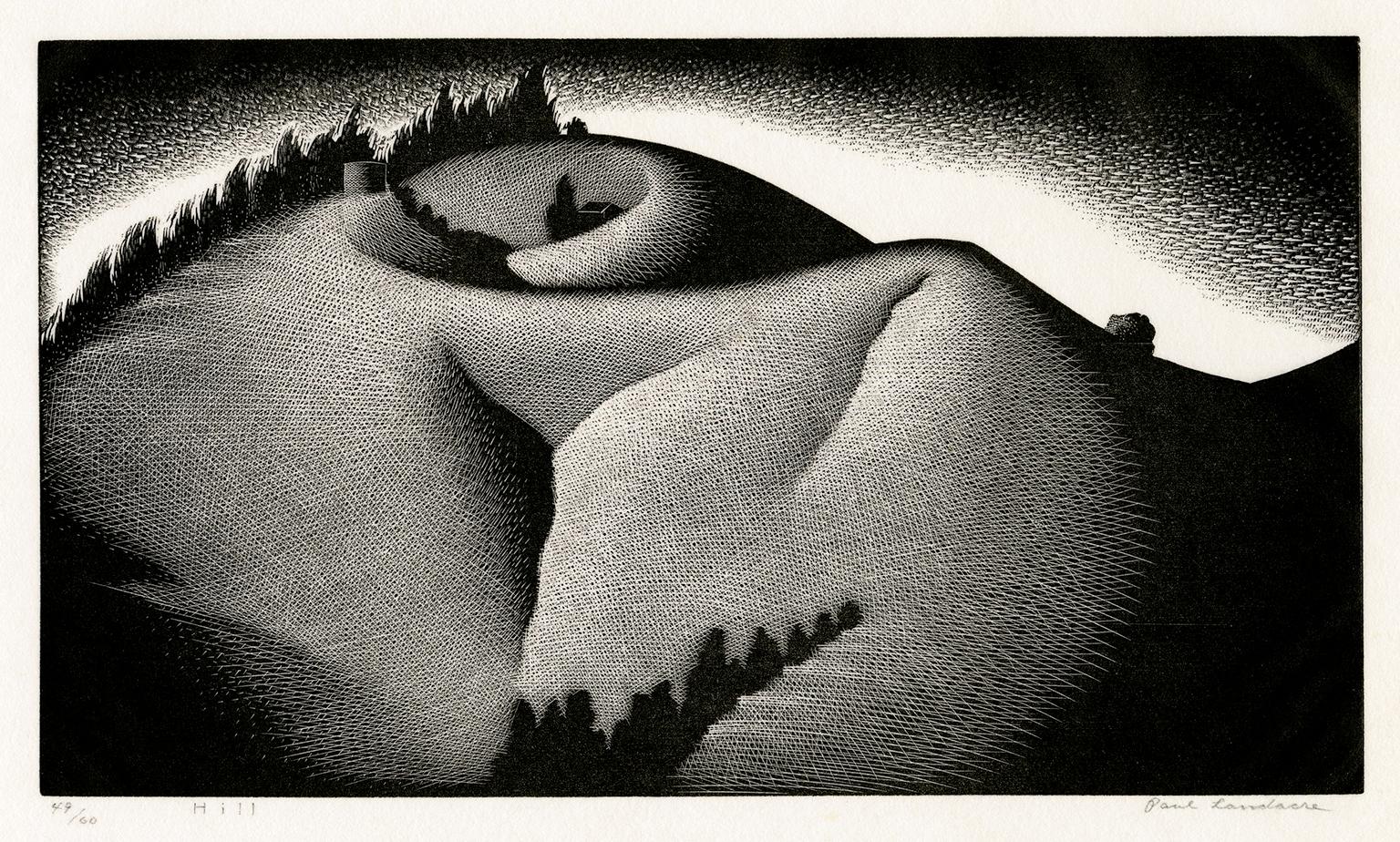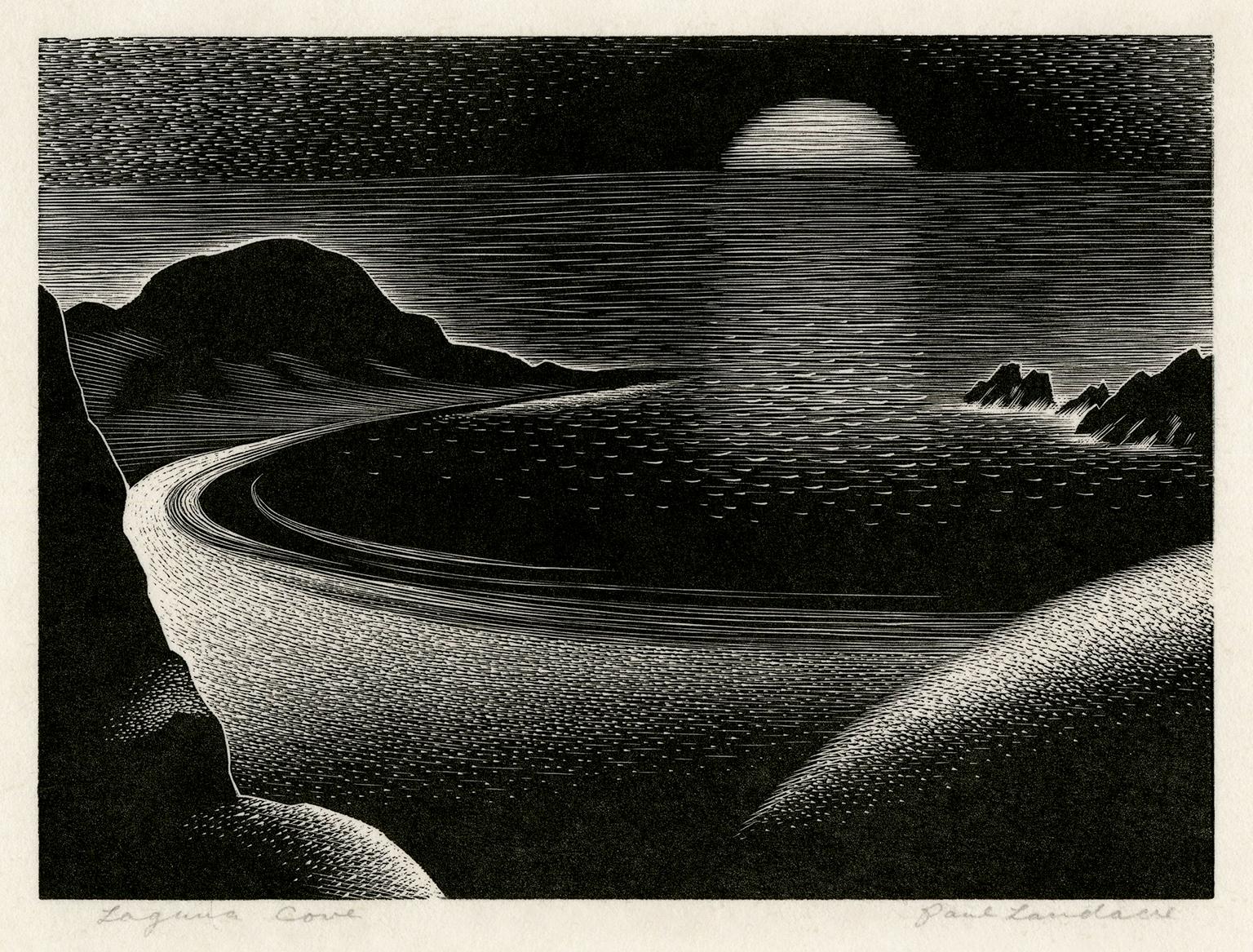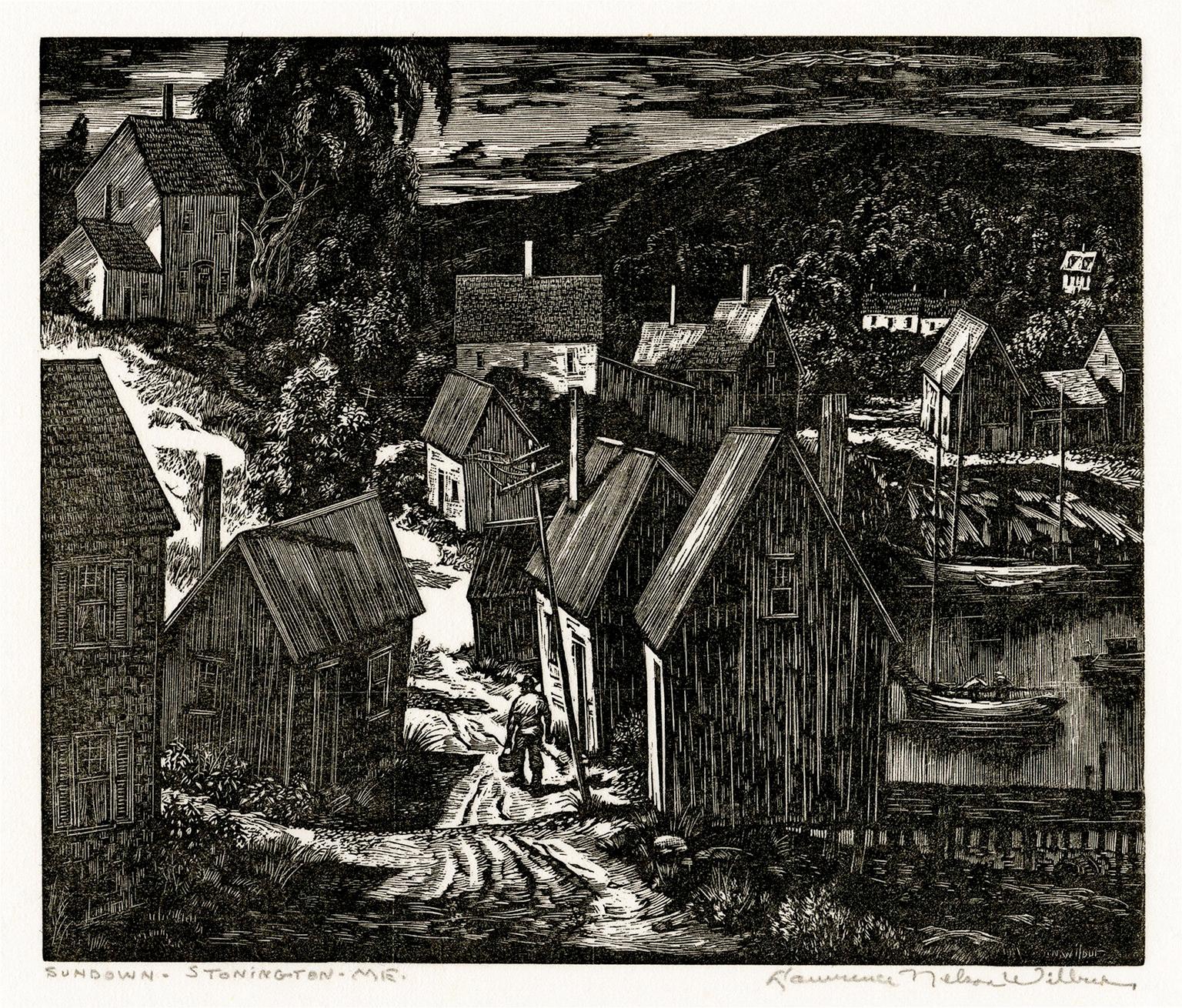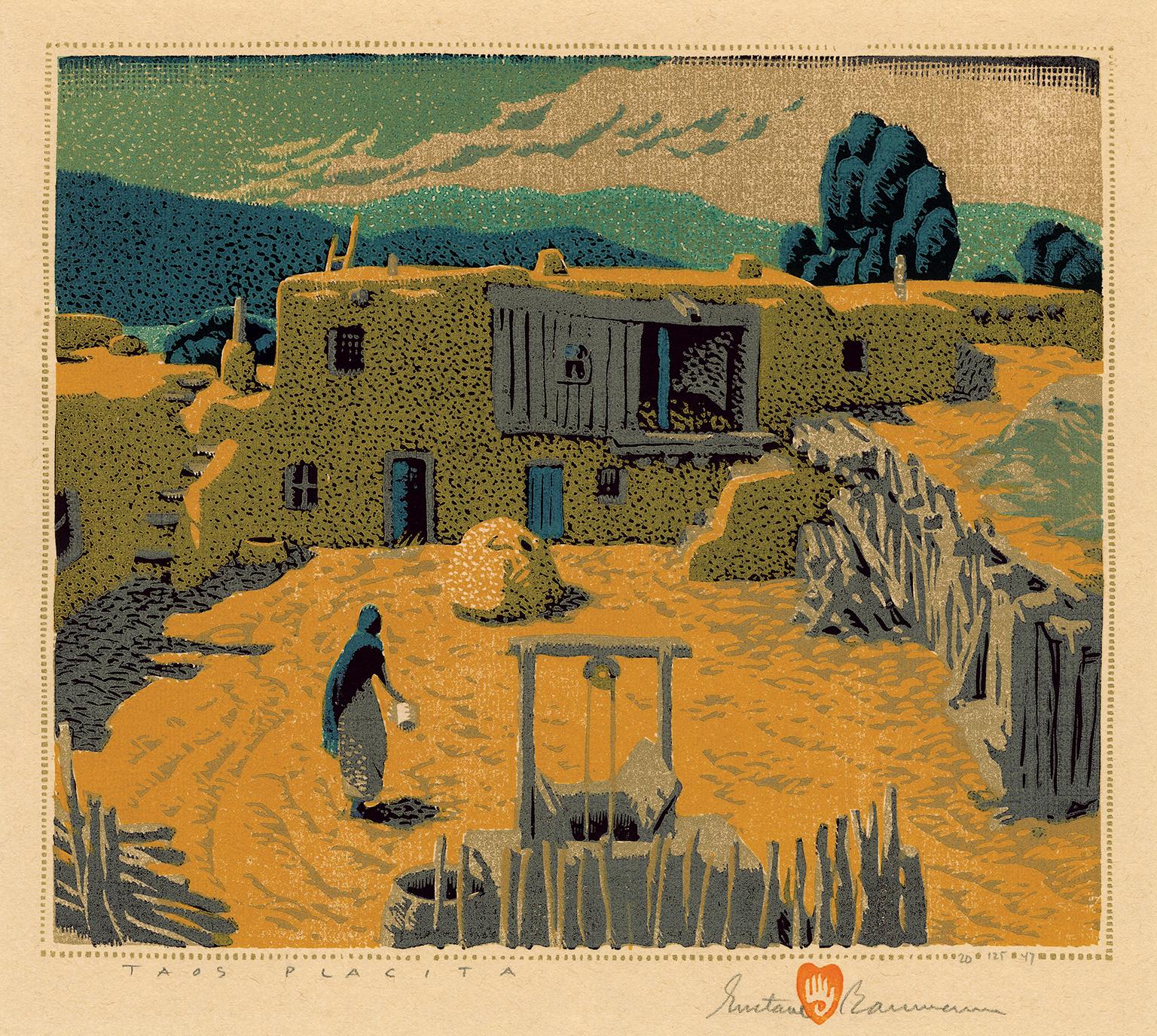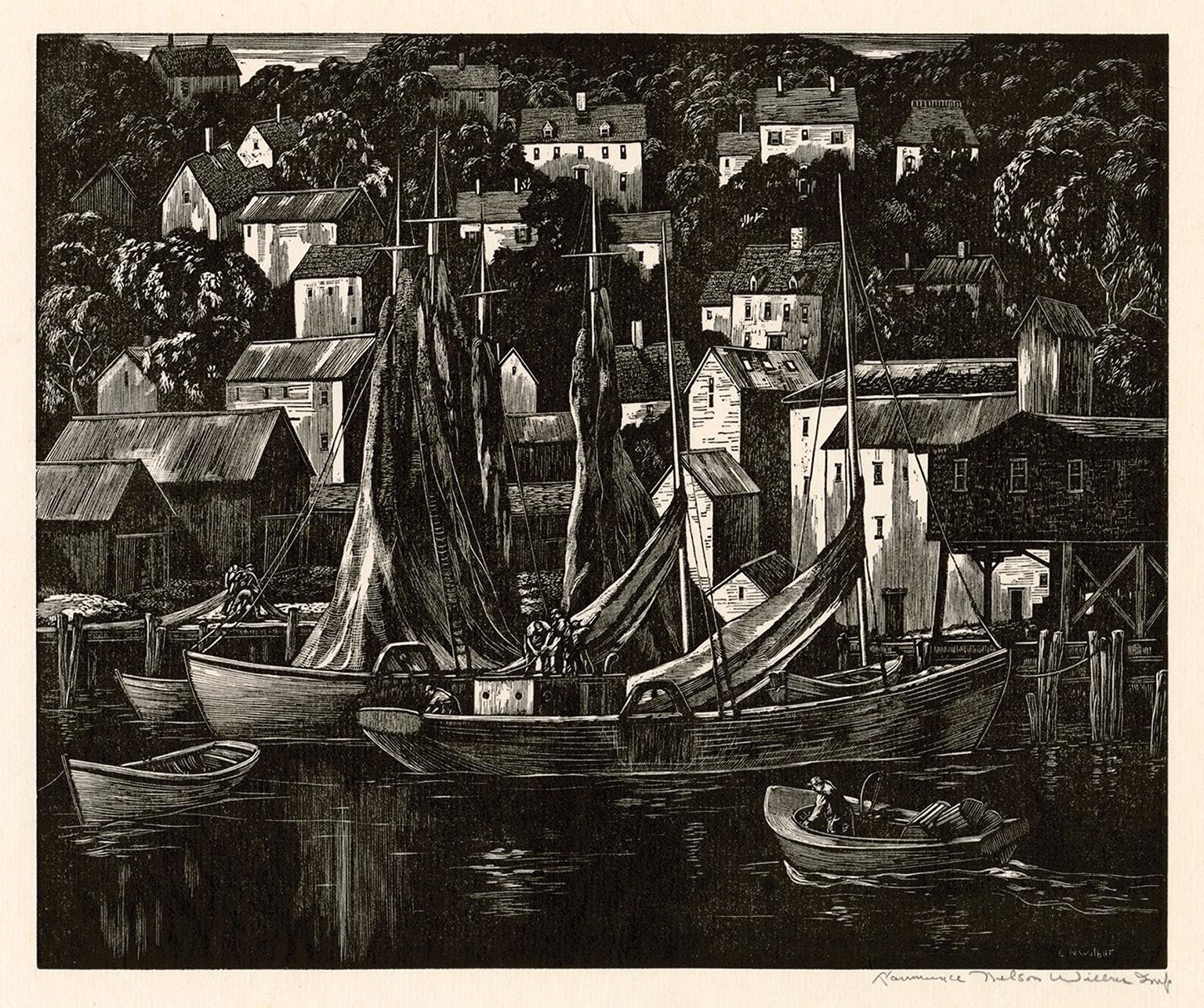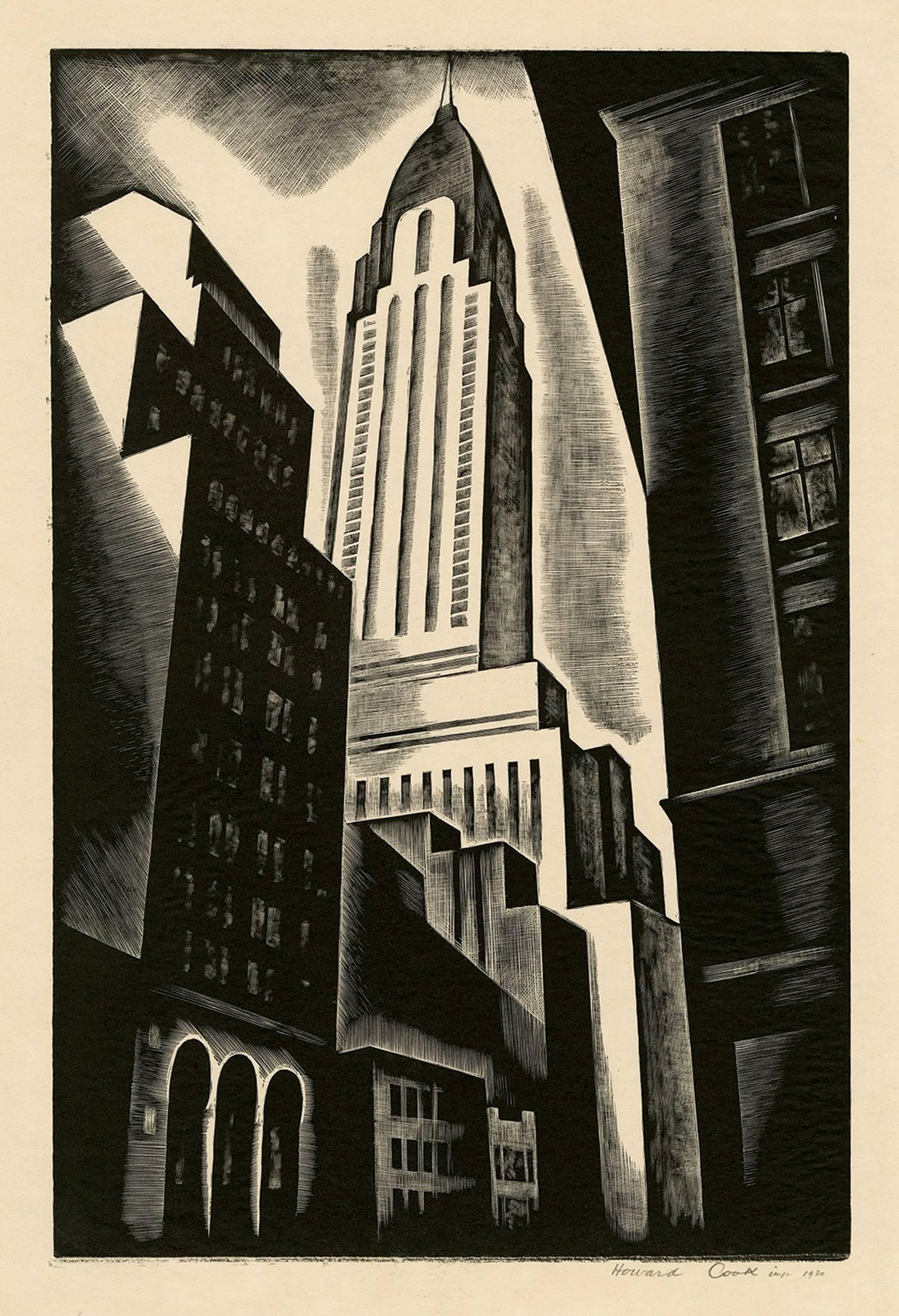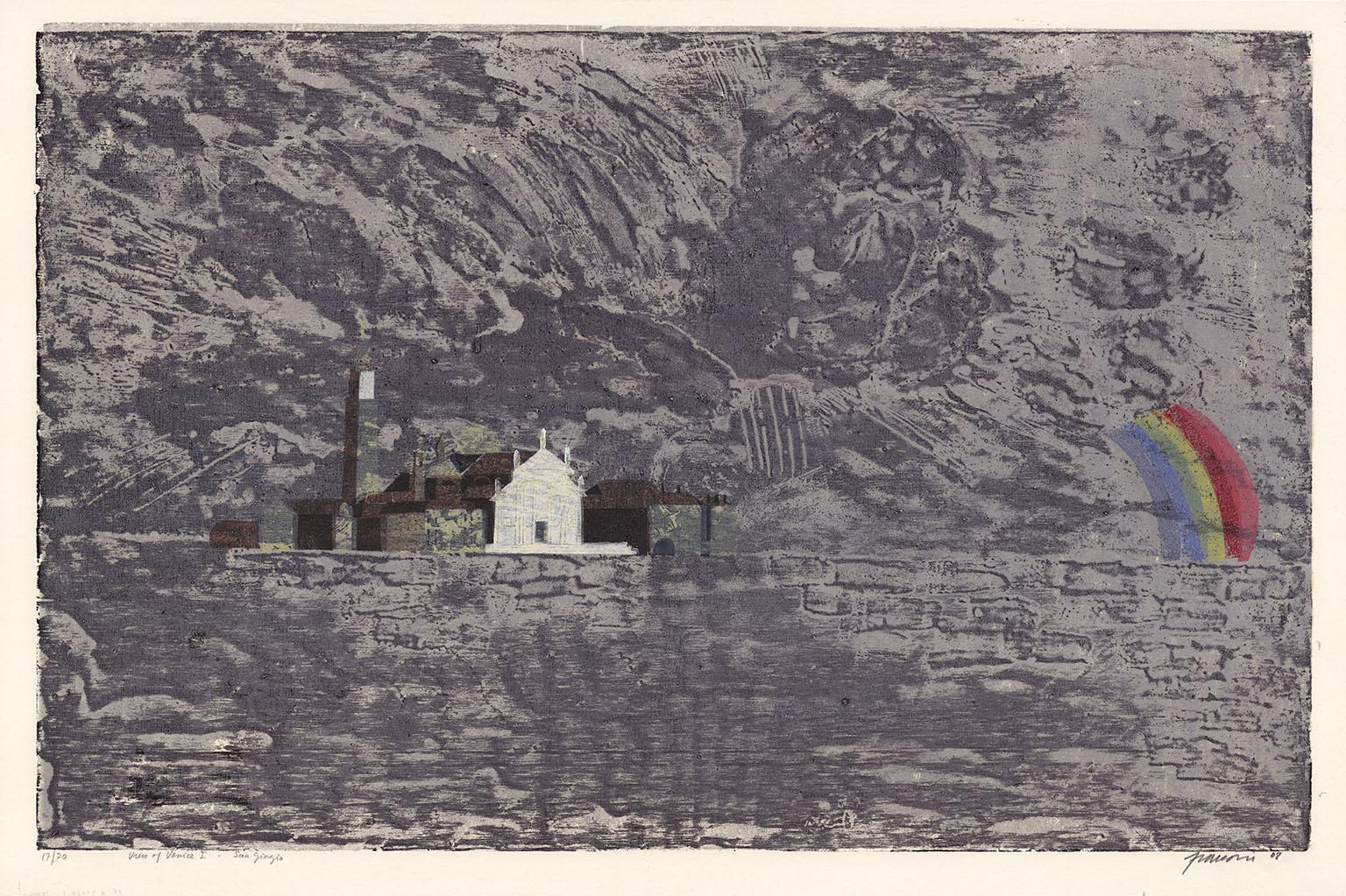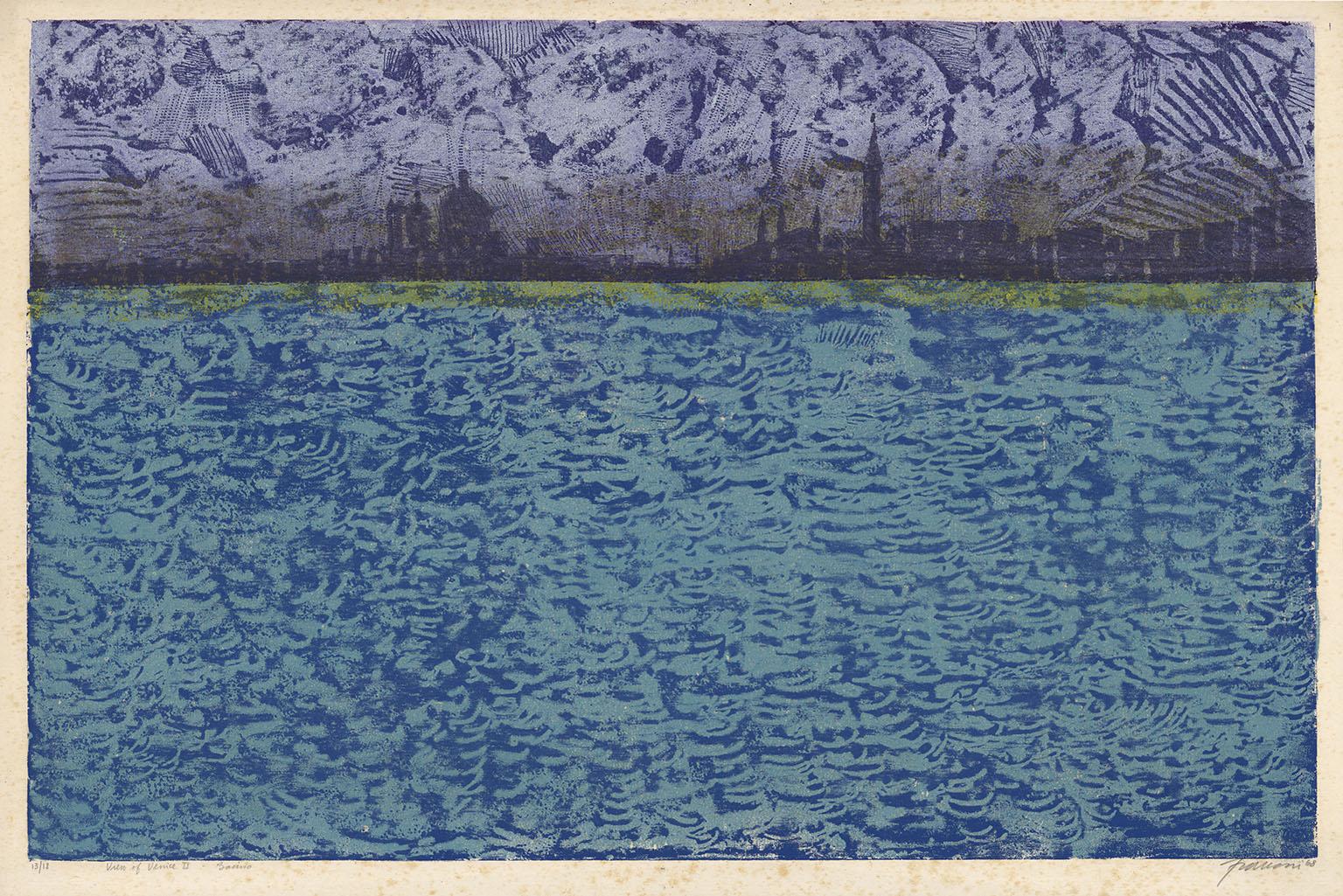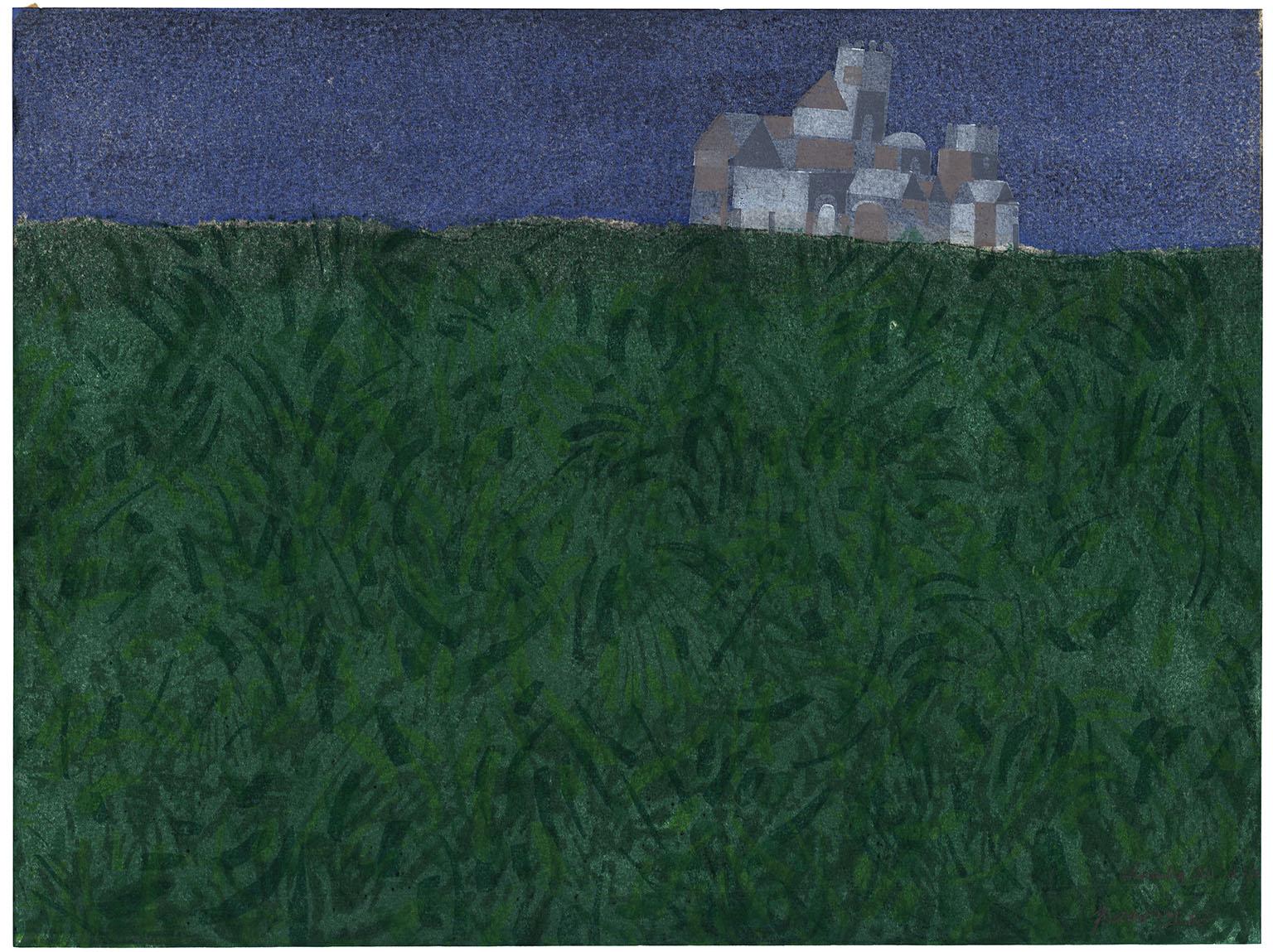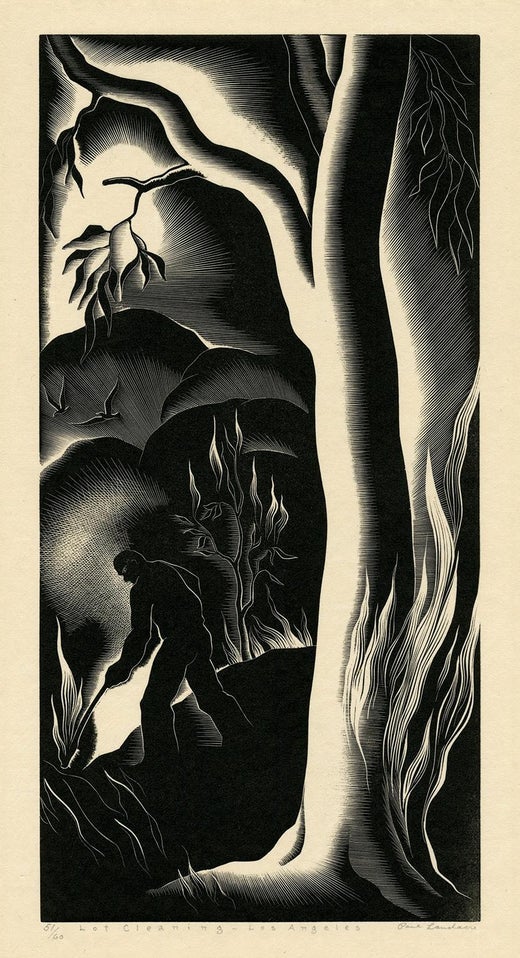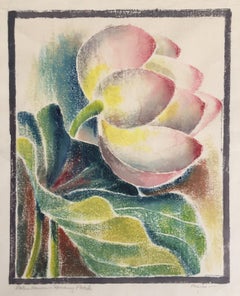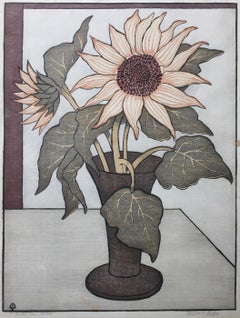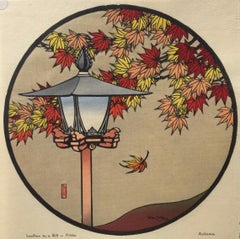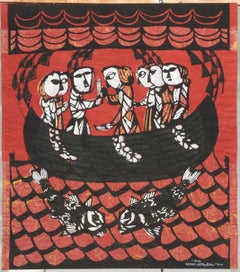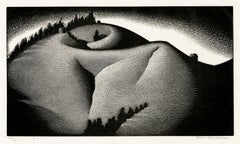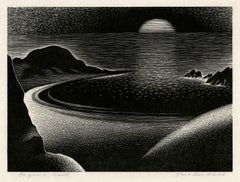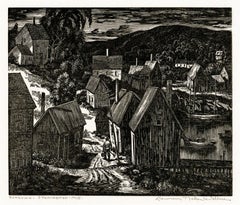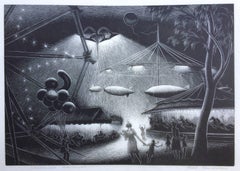
CHILDREN'S CARNIVAL
View Similar Items
Want more images or videos?
Request additional images or videos from the seller
1 of 7
Paul LandacreCHILDREN'S CARNIVAL1946
1946
Price:$1,635
$1,850List Price
About the Item
- Creator:Paul Landacre (1893-1963, American)
- Creation Year:1946
- Dimensions:Height: 8.5 in (21.59 cm)Width: 12 in (30.48 cm)
- Medium:
- Movement & Style:
- Period:
- Condition:See description.
- Gallery Location:Santa Monica, CA
- Reference Number:1stDibs: LU41132493333
Paul Landacre
Paul Landacre was an illustrator who specialized in wood engravings of naturalistic images executed in a sparse, rhythmic, linear style. Born in Columbus, Ohio, he was an athlete as a youth. During his sophomore year at Ohio State University, he contracted a life-threatening illness that left him partially disabled. During this same year he also enrolled in a drawing class. After a long recuperation, Landacre moved with his family to California. In order to increase his physical strength he took long walks in the nearby rural areas, and on these walks, drew in his sketchbook. By 1918 he found a job as a commercial illustrator. In 1923 he enrolled at the Otis Art Institute, where he studied all types of media, including wood engraving. Landacre's artistic reputation began to emerge in the early 1930s with the publication of his book California Hills and other Wood Engravings and his first one-person exhibition in Los Angeles. He received many commissions for book illustrations; since he worked in a careful, deliberate manner, his large projects required years to complete. For thirty-one years the artist maintained a hand press in his home, allowing him to have total control over the printing of his designs. In 1939 he was made an associate of the National Academy of Design. The remainder of Landacre's professional career was balanced between teaching and illustrating books. Two examples from the National Gallery's permanent collection demonstrate the range of Landacre's work. His engraving, Smoke Tree, evokes the nearby desert scenery that the artist knew. The sharp, angular canyons of the mountain contrast with the delicate, small-leafed tree in the foreground. Some Ingredients is a still life composition that displays the same strength of line, forceful contrasts, and textures seen in his landscapes. [This is an excerpt from the interactive companion program to the videodisc American Art from the National Gallery of Art. Produced by the Department of Education Resources, this teaching resource is one of the Gallery's free-loan educational programs.]
About the Seller
5.0
Recognized Seller
These prestigious sellers are industry leaders and represent the highest echelon for item quality and design.
Gold Seller
Premium sellers maintaining a 4.3+ rating and 24-hour response times
Established in 1977
1stDibs seller since 2016
289 sales on 1stDibs
Typical response time: 2 hours
Associations
International Fine Print Dealers Association
Authenticity Guarantee
In the unlikely event there’s an issue with an item’s authenticity, contact us within 1 year for a full refund. DetailsMoney-Back Guarantee
If your item is not as described, is damaged in transit, or does not arrive, contact us within 7 days for a full refund. Details24-Hour Cancellation
You have a 24-hour grace period in which to reconsider your purchase, with no questions asked.Vetted Professional Sellers
Our world-class sellers must adhere to strict standards for service and quality, maintaining the integrity of our listings.Price-Match Guarantee
If you find that a seller listed the same item for a lower price elsewhere, we’ll match it.Trusted Global Delivery
Our best-in-class carrier network provides specialized shipping options worldwide, including custom delivery.More From This Seller
View AllLOTUS FLOWER - ROEDING PARK - Provincetown Style
By Mary Travis
Located in Santa Monica, CA
MARY TRAVIS (Active 1935 - 40)
LOTUS FLOWER ROEDING PARK. c.1935-40
White line color woodcut. Signed and titled in pencil. Small edition. 10” x 8”. Full sheet. tears
in upper margin. Travis worked in Berkeley, California and was probably a follower of William S...
Category
1930s American Modern Landscape Prints
Materials
Woodcut
$2,000 Sale Price
20% Off
THE SUNFLOWER
Located in Santa Monica, CA
ANDERS ALDRIN (Swedish /American 1889 – 1970)
THE SUNFLOWER ca. 1935 (Newark Museum 9)
Color woodcut, edition c. 150. Signed, unnumbered, but dedicat...
Category
1930s American Modern Landscape Prints
Materials
Woodcut
LANTERN ON A HILL - NIKKO - AUTUMN
Located in Santa Monica, CA
LILIAN MILLER (1895 - 1943)
LANTERN ON A HILL - NKKO - AUTUMN, 1934 (Brown 104)
Color woodcut, signed and dated in ink in the image. Titled in pencil by the artist at lower sheet edge. Circular, 10 inches in diameter. Beautiful fresh impression In very good condition with full margins, sheet 10 5/8 x 10 1/2 inches. Miller carried on a tradition started by woman, Americans Helen Hyde, Berta Lum and Englishwoman Elizabeth Keith, who learned and used Japanese color woodcut making techniques in the first part of the 20th century.
Illustrated in "Between Two Worlds - The Life and Art of Lilian May Miller...
Category
1930s Modern Landscape Prints
Materials
Color, Woodcut
Jonah
By Sadao Watanabe
Located in Santa Monica, CA
SADAO WATANABE (Japanese 1913-1996)
JONAH, 1959
Color stencil, signed, numbered and dated in white ink. Sheet, 25 5/8 x 22 5/8 inches. Edition: 44/50. Good color and generally good ...
Category
1950s Modern Figurative Prints
Materials
Woodcut, Stencil
$1,200 Sale Price
20% Off
EARLY JACOULET - A DOWNPOUR AT METALANIM PONOPE EAST CAROLINAS
By Paul Jacoulet
Located in Santa Monica, CA
EARLY JACOULET
PAUL JACOULET (1896 – 1960)
UNE AVERSEA METALANIM, PONAPE , EST CAROLINES, 1935
A DOWNPOUR AT METALANIM PONOPE EAT CAROLINAS (Miles 29)
Color woodcut, with metallic ...
Category
1930s Modern Figurative Prints
Materials
Woodcut, Color
ON and UP - One of Gearhart’s finest!! - 4th Largest image.- Depicts Lake Tahoe
By Frances H. Gearhart
Located in Santa Monica, CA
FRANCES H. GEARHART (1869 – 1958)
ON AND UP c. 1937
Color block print. Signed and titled in pencil. Edition unknown but rarely appears on the market. Large image 12 1/8 x 11 3/4”, ...
Category
1930s American Modern Landscape Prints
Materials
Woodcut
You May Also Like
'Hill' — American Modernism, California
By Paul Landacre
Located in Myrtle Beach, SC
Paul Landacre, 'Hill', wood engraving, 1936, edition 60 (only 54 printed); only 2 impressions printed in a second edition of 150. Signed, titled, and numbered '49/60' in pencil. Wien...
Category
1930s American Modern Landscape Prints
Materials
Woodcut
'Laguna Cove' — American Modernism, California
By Paul Landacre
Located in Myrtle Beach, SC
Paul Landacre, 'Laguna Cove', wood engraving, 1935; edition 60 (16 printed), 2nd edition 150 (6 printed), Woodcut Society 200, Wien 247. Signed and titled in pencil. A brilliant, black impression, on cream wove Japan, with full margins (3/4 to 1 3/4 inches), in excellent condition. Archivally matted to museum standards, unframed.
This impression is from the edition published for the Twentieth Presentation Print of the Woodcut Society, 1941. Printed by Torch Press, Cedar Rapids.
Literature: Reproduced in 'James Swann...
Category
1930s American Modern Landscape Prints
Materials
Woodcut
Coin de Rue Dans Soho
By Jean-Emile Laboureur
Located in New York, NY
Jean-Emile Laboureur (1877-1947), Coin de Rue Dans Soho, woodcut, 1909, signed in pencil lower left and numbered (15/15) [also initials in the plate]. Reference: Sylvain Laboureur 64...
Category
Early 1900s Modern Landscape Prints
Materials
Woodcut
'Sundown, Stonington, Maine' — Artist-printed Exhibition Proof
By Lawrence Wilbur
Located in Myrtle Beach, SC
Lawrence Nelson Wilbur (1897-1988), 'Sundown, Stonington, Maine', wood engraving, artist's proof, edition not stated but small, 1969. Signed and titled in pencil. Signed in the block...
Category
1940s American Modern Landscape Prints
Materials
Woodcut
'Taos Placita' — American Southwest Regionalist Masterwork
By Gustave Baumann
Located in Myrtle Beach, SC
Gustave Baumann, 'Taos Placita', color woodcut, 1947, edition 125. Baumann 132. Signed, titled, and numbered '20-125' in pencil; with the artist’s Hand-in-Heart chop. A superb, richly-inked impression, with fresh colors, on fibrous oatmeal wove paper; the full sheet with margins (2 to 3 1/8 inches); slight rippling at the left sheet edge, in excellent condition. Matted to museum standards, unframed.
Image size 9 5/8 x 11 1/4 inches (244 x 286 mm); sheet size 13 1/4 x 17 inches (337 x 432 mm).
Collections: New Mexico Museum of Art, Phoenix Art Museum, Wichita Art Museum.
ABOUT THE ARTIST
Gustave Baumann (1881-1971) was a renowned printmaker and a leading figure of the American color woodcut revival whose exquisite craftsmanship and vibrant imagery captured the essence of the Southwest.
"A brilliant printmaker, Baumann brought to the medium a full mastery of the craft of woodworking that he acquired from his father, a German cabinetmaker. This craftsmanship was coupled with a strong artistic training that resulted in the handsome objects we see in the exhibition today. After discovering New Mexico in 1918, Baumann began to explore in his woodblock prints of this period the light. color, and architectural forms of that landscape. His prints of this period are among the most beautiful and poetic images of the American West."
—Lewis I. Sharp, Director, Denver Art Museum
Baumann, the son of a craftsman, immigrated to the United States from Germany with his family when he was ten, settling in Chicago. From 1897 to 1904, he studied in the evenings at the Art Institute of Chicago, working in a commercial printmaking shop during the day. In 1905, he returned to Germany to attend the Kunstwerbe Schule in Munich, where he decided on a career in printmaking. He returned to Chicago in 1906 and worked for a few years as a graphic designer of labels.
Baumann made his first prints in 1909 and exhibited them at the Art Institute of Chicago the following year. In 1910, he moved to the artists’ colony in Nashville, Indiana, where he explored the creative and commercial possibilities of a career as a printmaker. In 1915, he exhibited his color woodcuts at the Panama-Pacific International Exposition in San Francisco, winning the gold medal.
Among Baumann’s ongoing commercial activities was his work for the Packard Motor Car Company from 1914 to 1920 where he produced designs, illustrations, and color woodcuts until 1923.
In 1919, Baumann’s printmaking work dominated the important exhibition of American color woodcuts at the Detroit Institute of Arts. Twenty-six of his prints were included, far more than the works of any other artist. A set of his blocks, a preparatory drawing, and seven progressive proofs complemented the exhibition. That same year, Baumann worked in New York and, over the summer, in Provincetown, Massachusetts. His airy images of Cape Cod employed soft, pastel colors and occasionally showed the influence of the white-line woodcut technique.
Many of his Chicago artist friends had traveled to the southwest, and Baumann became intrigued by their paintings, souvenirs, and stories of an exotic place named Taos, New Mexico. In the summer of 1918, he spent the summer in Taos sketching and painting before visiting Santa Fe. Paul Walter, the director of the Museum of New Mexico, offered him a studio in the museum's basement. Inspired by the rugged beauty of the Southwest—the vibrant colors and dramatic landscapes of the region became a central theme in his work, influencing his artistic style and subject matter for the remainder of his career. Later in the decade, he traveled to the West Coast and made prints of California landscape.
Baumann's prints became synonymous with the Southwest, capturing the spirit of its place in America's identity with a unique sense of authenticity and reverence. His iconic images of desert vistas, pueblo villages, and indigenous cultures served as visual tributes to the region's rich cultural heritage, earning him a dedicated following among collectors and curators alike.
A true craftsman and artist, Baumann completed every step of the printmaking process himself, cutting each block, mixing the inks, and printing every impression on the handmade paper he selected. His dedication to true craftsmanship and his commitment to preserving the integrity of his artistic vision earned him widespread acclaim and recognition within the art world. About the vibrant colors he produced, Baumann stated, “A knowledge of color needs to be acquired since they don’t all behave the same way when ground or mixed...careful chemistry goes into the making of colors, with meticulous testing for permanence. While complicated formulae evolve new colors, those derived from Earth and metal bases are still the most reliable.”
In the 1930s, Baumann became interested in puppet theater. He designed and carved his own marionettes and established a little traveling company. From 1943 to 1945, the artist carved an altarpiece for the Episcopal Church of the Holy Faith in Santa Fe. In 1952, a retrospective exhibition of his prints was mounted at the New Mexico Museum of Fine Arts. Throughout his prolific career, Baumann executed nearly four hundred color woodcuts.
Baumann’s woodcuts...
Category
1940s American Modern Landscape Prints
Materials
Woodcut
Tranquil Harbor (Gloucester, Massachusetts) — 1950s Cape Ann Regionalism
By Lawrence Wilbur
Located in Myrtle Beach, SC
Lawrence Nelson Wilbur (1897-1988), 'Tranquil Harbor' (Gloucester, Massachusetts), wood engraving, edition 55, 1958. Signed in pencil, and signe...
Category
1950s American Modern Landscape Prints
Materials
Woodcut
Recently Viewed
View AllMore Ways To Browse
Russian Wood Box
Sculpture Nike
Cat Boat
Man And Woman Bust Sculpture
Marble Relief Portrait
Michael Bowles Art
New York Yankees
Nude Athlete
Pair Of 19th Century Oil Portraits
Renee French
Schuster Modern
The Cottage Girl
2 Matching Painting
Black Forest Horse
H Collins
Mid Century Paintings Male Nudes
Pair 19th Century Oil Portrait Paintings
Palm Botanical Prints
